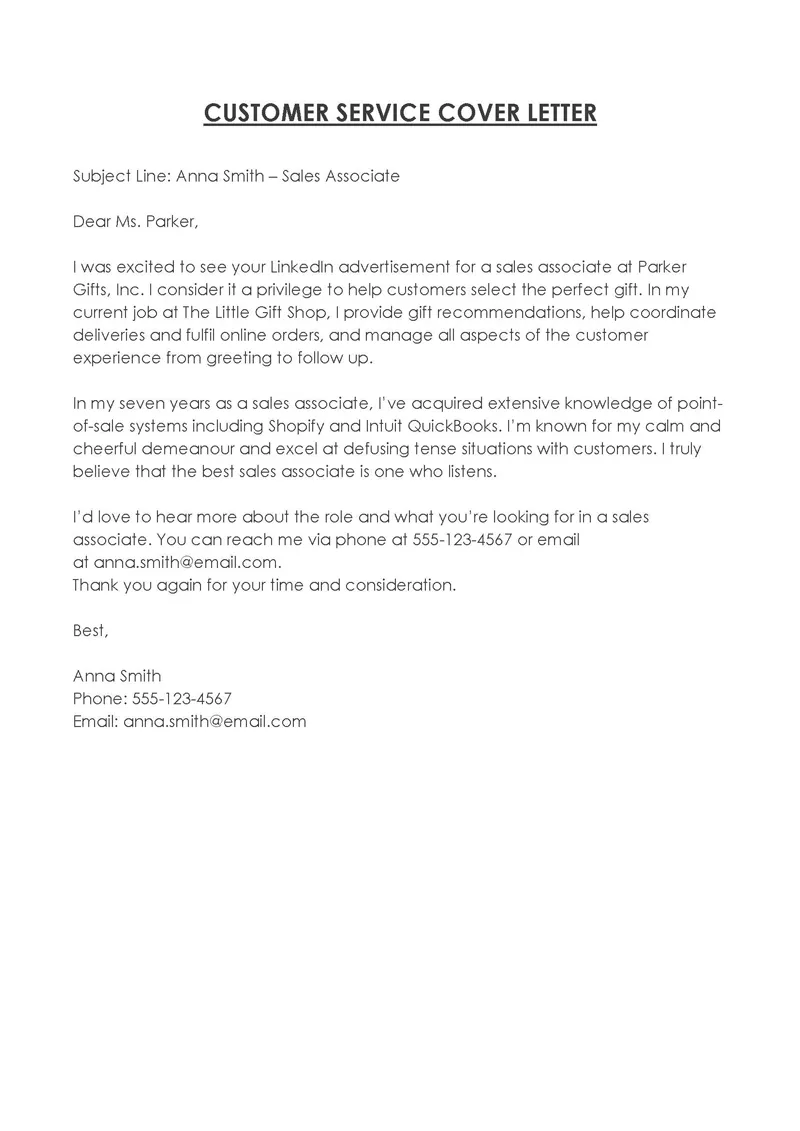Why a Customer Service Cover Letter Matters
A customer service cover letter is your first opportunity to make a positive impression on a potential employer. It’s more than just a formality; it’s a critical tool that allows you to showcase your personality, highlight your relevant skills, and explain why you’re the perfect fit for the role. In a competitive job market, a well-crafted cover letter can significantly increase your chances of landing an interview. It provides context to your resume, offering a narrative that demonstrates your passion for customer service and your understanding of the specific requirements of the job. A strong cover letter differentiates you from other applicants, making you memorable and demonstrating your proactive approach to securing employment. Moreover, it shows your attention to detail, writing proficiency, and genuine interest in the company. When done right, your customer service cover letter helps you stand out.
Showcasing Your Skills
Your cover letter should spotlight the skills that make you a standout customer service candidate. Focus on abilities that are directly transferable to the role, illustrating how your past experiences have prepared you for the challenges and opportunities the job presents. This is your chance to demonstrate why you are the ideal candidate. Focus on the specifics of the skills mentioned in the job description. Quantify your achievements whenever possible – using numbers to show how you’ve improved customer satisfaction or resolved issues more efficiently. By highlighting your customer service prowess, you immediately give yourself a step up in the application process.
Highlighting Communication Skills
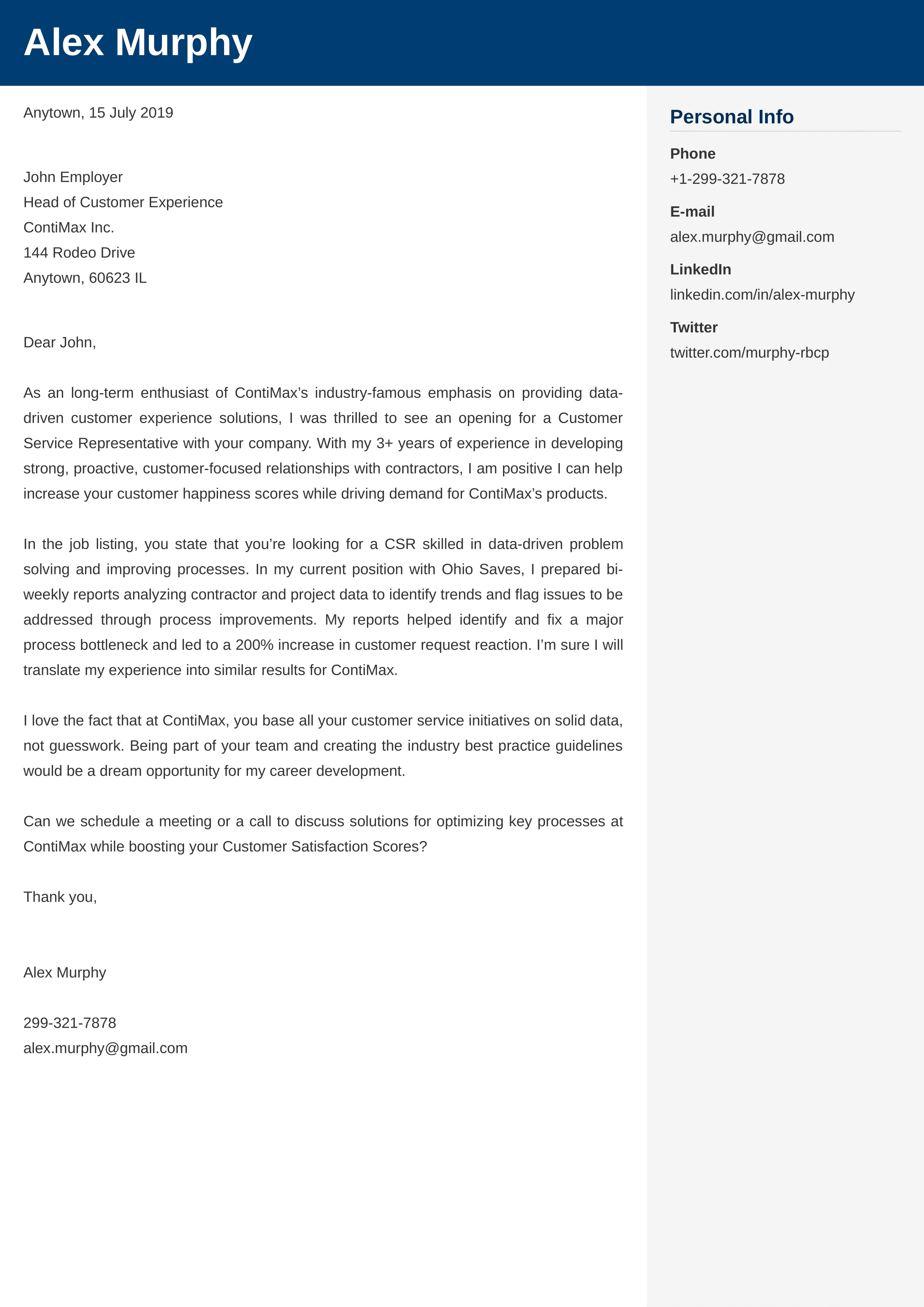
Communication is paramount in customer service. Your cover letter should emphasize your ability to communicate effectively, both verbally and in writing. Provide examples of how you’ve used strong communication skills to resolve conflicts, explain complex information clearly, and build rapport with customers. Detail instances where you’ve adapted your communication style to suit different audiences, demonstrating your versatility. Mention your experience in active listening, and how you’ve used that skill to understand customer needs and provide appropriate solutions. Illustrate how you’ve conveyed empathy and understanding, ensuring customers feel heard and valued. Ensure you showcase how your writing style reflects professionalism and clarity, ensuring the recruiter understands your abilities.
Emphasizing Problem-Solving Abilities
Customer service often requires quick thinking and effective problem-solving skills. In your cover letter, provide specific examples of how you’ve tackled difficult situations. Describe challenges you’ve faced, the steps you took to analyze the problem, and the successful outcomes you achieved. Highlight your ability to think on your feet, find creative solutions, and take ownership of customer issues. Illustrate your experience in troubleshooting technical problems, resolving complaints, and implementing process improvements to prevent future issues. Mention your experience in using problem-solving skills to turn frustrated customers into satisfied ones and how you have worked with a team to accomplish that goal.
Demonstrating Empathy and Patience
Empathy and patience are essential qualities in customer service. Use your cover letter to demonstrate your ability to understand and respond to customer needs with compassion. Share experiences where you’ve gone above and beyond to assist a customer, showing your willingness to provide exceptional service. Explain how you maintain a calm and professional demeanor, even in stressful situations, and how you use patience to de-escalate conflicts. Illustrate your understanding of customer perspectives and your ability to tailor your responses to meet their emotional needs. Provide examples of how you’ve built trust and loyalty by showing genuine care and attention, illustrating your empathetic approach to customer interactions.
Structuring Your Cover Letter for Impact
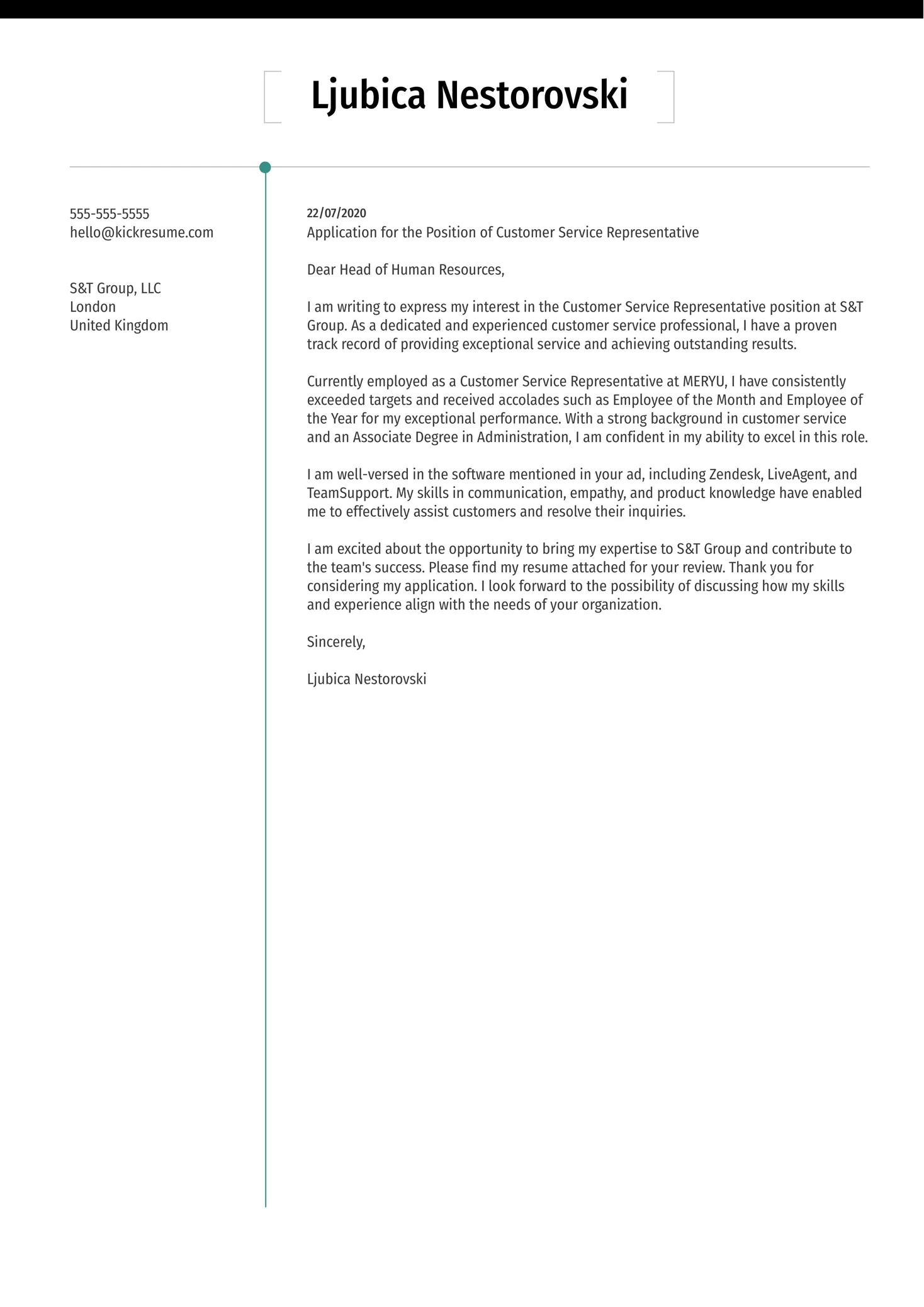
The structure of your cover letter is just as important as its content. A well-organized cover letter makes it easy for the hiring manager to quickly grasp your key qualifications. The format of your letter should be clear, concise, and easy to read. Each section should flow logically into the next, creating a cohesive narrative that supports your application. Pay close attention to your opening, body paragraphs, and closing, as each plays a vital role in making a lasting impression. Adhering to a professional format shows you have understood what recruiters look for. By structuring your cover letter effectively, you demonstrate your attention to detail and professionalism.
The Header Essentials
Your cover letter header should include your contact information, the date, and the hiring manager’s details. Make sure your contact information is up-to-date and easy to find. Include your full name, phone number, email address, and LinkedIn profile URL. Address the letter to the specific hiring manager if possible; this shows you’ve taken the time to research the company. If the name is unavailable, use a general greeting such as “Dear Hiring Manager.” The date should be the date you are sending the cover letter. This ensures a professional beginning to your application.
Crafting a Compelling Opening
The opening of your cover letter should grab the reader’s attention and make them want to learn more about you. Start with a strong statement that immediately highlights your interest in the role and the company. Clearly state the position you are applying for and where you saw the job posting. Mention your enthusiasm for the company’s mission or values, demonstrating that you’ve done your research. Consider starting with a brief anecdote that showcases your customer service skills or a specific achievement that aligns with the job requirements. Make sure that the opening is succinct, professional, and immediately demonstrates the value you bring to the role. Set the stage for a successful read of the remainder of your cover letter.
Body Paragraphs Showcasing Achievements
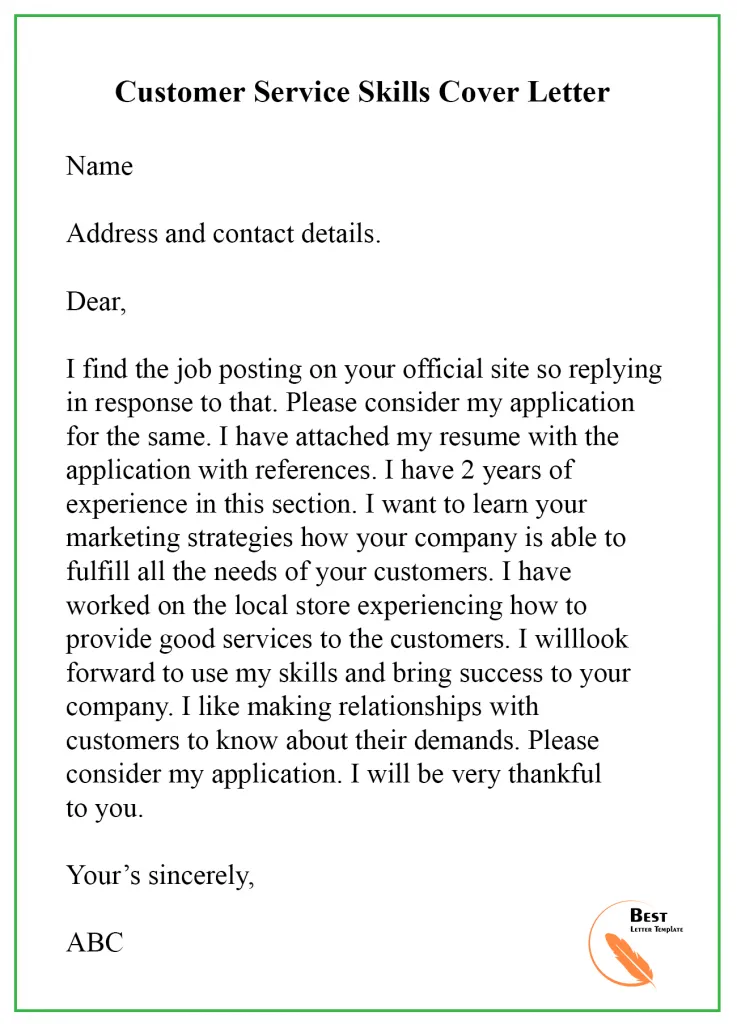
Use the body of your cover letter to highlight your key skills and experiences relevant to the job. Structure your paragraphs to focus on specific achievements rather than simply listing your responsibilities. Start each paragraph with a clear topic sentence, then use the STAR method (Situation, Task, Action, Result) to provide detailed examples. Describe the situation, explain the task you were assigned, outline the actions you took, and highlight the positive results you achieved. Quantify your accomplishments whenever possible, using numbers and metrics to demonstrate your impact. Use keywords from the job description to show your understanding of the role requirements. Show how your experience and skills align with the company’s needs.
Closing with Confidence
Your closing should reiterate your interest in the position and thank the hiring manager for their time and consideration. Express your enthusiasm for the opportunity to learn more about the role and the company. Reiterate your key qualifications and summarize how you can contribute to the team’s success. Include a call to action, such as inviting the hiring manager to contact you for an interview. Make sure your closing is professional, confident, and leaves a lasting positive impression. End with a standard closing such as “Sincerely” or “Best regards,” followed by your full name. The closing should give the impression that you are prepared for an interview.
Tailoring Your Letter to the Job
Avoid using a generic cover letter. Tailoring your cover letter to each job application is crucial. This involves personalizing the content to match the specific requirements and expectations outlined in the job description. Take the time to thoroughly review the job posting and identify the key skills and qualifications the employer is seeking. Then, adjust your letter to highlight your relevant experiences and achievements that align with those requirements. This demonstrates that you’ve carefully considered the role and are genuinely interested in the company. Tailoring your cover letter significantly increases your chances of standing out and getting noticed by the hiring manager. Customization is key to showcasing your value.
Researching the Company and Role
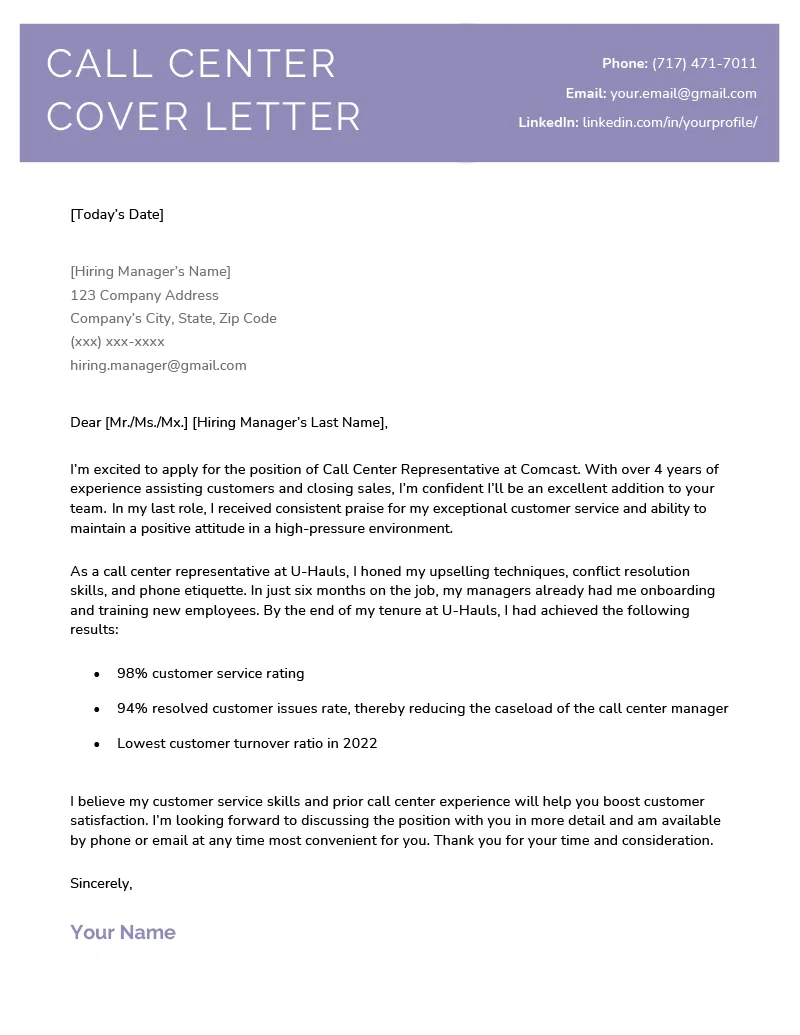
Before writing your cover letter, thoroughly research the company and the specific role. Visit the company’s website to understand its mission, values, and culture. Explore the company’s social media presence to see how it communicates with customers and the public. Look for information about recent projects, news, and achievements that you can reference in your letter. Understand the job responsibilities and what skills are required. This research helps you tailor your letter to the company’s specific needs and demonstrate your genuine interest. Moreover, it provides context for highlighting how your experience aligns with their goals.
Using Keywords from the Job Description
Incorporate keywords from the job description throughout your cover letter. Identify the key skills, qualifications, and phrases used in the posting, and weave them naturally into your writing. Using keywords ensures that your letter aligns with the employer’s requirements and shows that you understand the role. Moreover, it can help your application get past automated screening systems. Be careful not to overuse keywords or stuff them into your letter artificially. Use them naturally and strategically to demonstrate your qualifications and understanding of the job. Prioritize keywords that reflect the most important aspects of the role.
Proofreading and Formatting
Proofreading and formatting are crucial steps in creating a professional cover letter. Errors in grammar, spelling, or formatting can undermine your credibility and make a negative impression on the hiring manager. Before submitting your cover letter, carefully proofread it multiple times. Check for typos, grammatical errors, and inconsistencies in your writing. Ensure that your sentences flow logically and that your ideas are clearly communicated. Pay attention to formatting elements such as font size, spacing, and margins. Make sure your cover letter is easy to read and visually appealing. Ask a friend or family member to proofread your letter as well. Reviewing and formatting showcases your attention to detail and professionalism.
